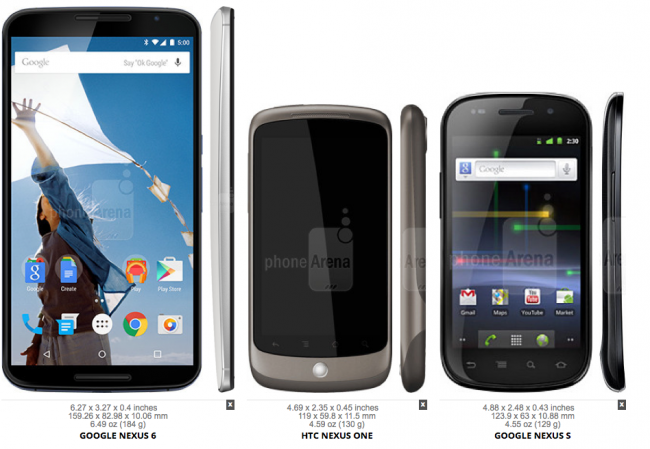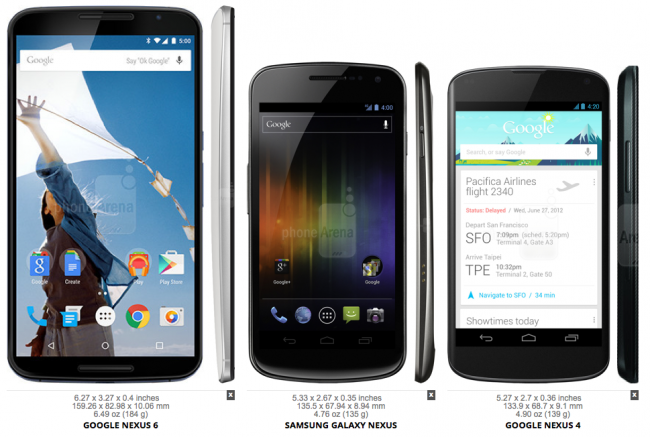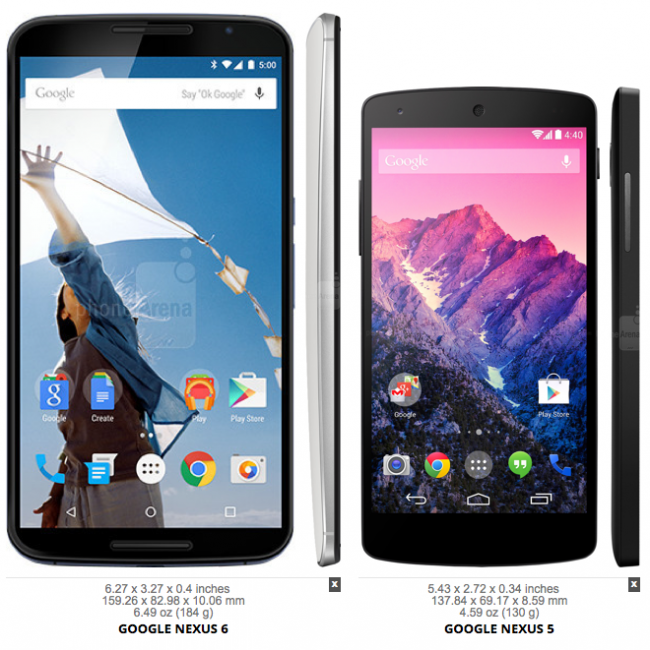What smartphones screens are growing increasingly is nothing new. Only within the Nexus range we can see how the first had 3.7 inches and the latter reaches the 5.96 inches so it remains an interesting exercise to see how all phones are compared in size to Google.
Larger screens but especially at higher resolutions. Funny how in just four years has increased the diagonal of the terminals in the case of Google Nexus over 2 inches, resolutions and who now seem to us or receipt for the input range and reach 2K. Moreover, at this time, four manufacturers have put their stamp on the terminals of the Mountain View giant. Looking at the list of brands, just because it would fail Sony are HTC, Samsung, LG and now Motorola.
The first Nexus One , back in the early months 2010 and this time at the hands of HTC, the same manufacturer that four years later returned to work with Google to create its new tablet Nexus 9 had a screen 3.7 inch , resolution 480 x 800 pixels , which offered a screen density of 252 dots per inch (dpi). Clearly, when compared with the 5.96 inch Nexus 6 , his 1440 x 2560 pixels , which provides 493 dpi is a abyss.
it is also in its dimensions, with 159.3 x 83 mm in front of the Nexus 6 119 x 59.8 mm Nexus 6 However, this factor is not comparable as larger screens require more space, however, if the thickness is interesting to watch as The first Nexus was just one millimeter thicker , 11.5, that the Nexus 6 and 10.1 mm.

The following terminal reached for Christmas of that same year . Google Nexus S , the first of the Samsung had a screen that was already SuperAMOLED , which distanced little in size of Nexus Prime, and growing to 4 inches but kept the 480 x 800 pixel resolution , giving a density of 233 dpi . That itself was one of the most appreciated by users because with it he offered a Display , which was not curved , but it was the glass that covered it, giving it a special touch and appearance for that time. The thickness of this device and was closer to the Nexus 6 with 10.9 mm.
Almost a year later, in October 2011 came the Galaxy Nexus , signed again by the Korean company. The wait is translated into a screen, again SuperAMOLED, 4.65 inches but above all, with a more interesting resolution and 720p (1280 x 720 pixels) which gives a density of 316 dpi . Its thickness was something you could say that that reached out and 8.9 mm, below and shown what the Nexus 6.

We and the first of the terminals in which Google switched to Samsung by LG as the manufacturer in November 2012 Nexus 4 reached a 4.7 inch screen and improving some resolution to the Galaxy Nexus 768 x 1280 pixels, which left the density of your screen 318 dpi . Also up thickness, 9.1 mm to but added a novelty and was changing the technology itself to a True HD IPS Plus.

and spent the last of the LG Nexus, Nexus 5 . In this screen terminal was improved to make it True HD IPS + which resulted in a resolution FullHD (1080p) for your 4.95 inch diagonal. The significant jump occurred in dots per inch up to 445 dpi and again, the thickness was reduced, with Nexus thinnest history , 8.6 mm . Not surprisingly, for the price that will keep the security of your software updates in the coming years and its benefits, continues to be a really interesting purchase and recommended for those who are not comfortable with such large screens even against the Nexus 6.
What do you think how the story has evolved from the Google Nexus? Do you think that you have followed an interesting development or the last step is not so successful? Leave us your opinions in the comments and we invite you to share them via our forums
. Note: the comparison is carried out through the tool to compare actual sizes offered by the portal PhoneArena.
![]()
No comments:
Post a Comment